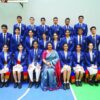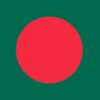EducationWorld India School Rankings EWISR 2024-25 (Part 1)
This year the field interviews and market research have been conducted by the Bengaluru-based AZ Research Partners which over the past two decades has established an excellent reputation for rigorous market research for clients in India and abroad
Even though public K-12 education in post-independence India was foolishly neglected by omniscient central planners and shallow pundits with disastrous consequences — contemporary India is ranked among the world’s poorest and most illiterate countries — somewhat paradoxically, the newly liberated country also hosted a good number of premier boarding schools such as Lawrence Sanawar and Lovedale, The Doon School, Bishop Cotton (Shimla and Bengaluru), Welham Boys (Dehradun), Woodstock, Mussoorie and Kodaikanal International, among others.
Yet there was little information in the public domain about these excellent schools, many of them established during the heyday of the British Raj. Well-to-do parents selected premier schools for their children on the basis of word-of-mouth information and/or because of legacy considerations, i.e, they were alumni of these institutions. Little hard information was available to compare and contrast the relative merits of the country’s best schools.
Dismayingly, public education — and education in general — continued to remain a back-burner issue for almost half a century until EducationWorld (EW) was launched in 1999 as the country’s first education news and features magazine with the serious mission to “build the pressure of public opinion to make education the #1 item on the national agenda”. Shortly thereafter in 2007, India’s — indeed Asia’s — first education magazine launched the annual EducationWorld India School Rankings (EWISR) to enable parents to assess the relative merits of schools in their cities and beyond, on carefully ideated parameters of primary-secondary education excellence. This enabled them to shortlist, even if not select, schools best aligned to the aptitudes and special intelligences of their children.
Since then the annual EWISR presented to the public uninterruptedly for the past 17 years, has been continuously refined and has evolved into the world’s — yes, the world’s — largest and most comprehensive schools ranking survey. This year’s EWISR rates over 4,000 schools under three major heads — day, boarding, and international — and 14 sub-categories (to eliminate apples and oranges type comparisons) in 458 cities and towns across India.
The socially beneficial outcome of the annual EWISR which is followed by a gala event staged in Delhi NCR, is that it has totally changed the landscape of K-12 education in India. Top-ranked schools in every sub-category in 458 cities, 28 states and nationally are felicitated and awarded trophies and certificates.
Suddenly schools in every category, sub-category, town and city countrywide, are competing to improve scores awarded by knowledgeable national sample respondents under each parameter which when added up determines national, state and city rankings.
As has proven time and again in every walk of life, competition is the best incentive to improve quality of goods and services.
Inevitably the runaway success of EducationWorld and the annual EWISR has prompted several pretender publications to plagiarise our design, architecture and methodology. Patently unable and/or unqualified to match the intellectual content of EW, several self-styled education magazines are publishing pale imitations of the annual EWISR, and given the low respect accorded by the law and society to intellectual property, are getting away with it. But to be honest, we are not overly concerned because imitation is often the best form of flattery. However the equivalence accorded by leaders of a surprising number of top-ranked schools to imitative cut-and-paste pretender magazines is a matter of considerable disappointment.
Be that as it may, EWISR 2024-25 is a watershed survey inasmuch as it marks the end of a 17-year-old association between EducationWorld and the Gurgaon-based Centre for Forecasting & Research Pvt. Ltd (C fore), a market research agency which had hitherto conducted field-based research for the annual EWISR. The facts and circumstances which led to the abrupt termination of the long-standing relationship by C fore are in the public domain and sub judice.
In retrospect this messy divorce and subsequent legal tangles have proved a blessing in disguise. It has resulted in a new partnership contracted with AZ Research Partners Pvt. Ltd (AZR, estb.2002), a Bengaluru-based market research company which over the past two decades has established an excellent reputation for rigorous market research. Among AZR’s corporate clients: Mars Global, Wipro FMCG, IndusInd Bank, Abbott Pharmaceuticals, Polycab and Nova IVF.
“In departure from past practice, for EWISR 2024-25 we have deliberately chosen a smaller but adequate number of 8,700 respondents comprising 5,150 parents of school-going children and 3,550 educationists, teachers and education counsellors in 22 states countrywide and interviewed them one-on-one, i.e, face-to-face or telephonically. Thus we have eliminated cluster, group and written interviews sacrificing quantity for interview depth. Moreover, our parents sample includes both SEC (socio-economic category) ‘A’ and ‘B’ households to make the survey more broad-based. Interviewees in 34 cities were requested to award schools with whom they were acquainted — schools unfamiliar to at least 20 respondents were eliminated from the rankings — scores up to 100 on 14 parameters of school education excellence and up to 200 under the parameter of ‘teacher competence’ as ideated and evolved by EducationWorld during the past 17 years. The scores awarded to schools by the knowledgeable sample respondents under 14 sub-categories (co-ed day, boys day, girls day, day-cum-boarding, co-ed boarding, girls boarding etc) were totaled to rank schools in each sub-category. Schools are ranked nationally, in their host states and city-wise. I believe EWISR 2024-25 provides parents and students a reliable and accurate overview of the relative merits of India’s top 4,000-4,500 primary-secondary schools,” says Shubra Mishra, Promoter-Director of AZ Research Partners whose field research personnel conducted the survey over three months (May-July).
An alumna of IIM-Lucknow with wide experience of market research (MARG, MARG-ORG) and corporate sector (Titan, Tata Tea and Blackstone Synovate), Mishra’s acceptance of our offer of partnership for conducting field research for EWISR has invested the world’s largest schools ranking survey with additional reliability and robustness.
With several professedly education news publications following in EducationWorld’s wake and transforming the schools rating and rankings into a blatantly quid pro quo business, there is considerable cynicism within academics and educators about the social utility and benefit of institutional surveys, as also of the pioneer EWISR. However Dr. Shyama Chona, the legendary former principal of Delhi Public School, R.K. Puram (Delhi) during whose stewardship this school was routinely ranked India’s premier co-ed day school, is convinced that ranking surveys and the annual EWISR in particular, discharge a very useful social purpose.
“The breadth and depth of the EWISR which enables the country’s best schools to gain wide publicity, if not awards, prompts every institution to undertake determined improvement efforts. This survey also encourages obscure schools in Tier-II and Tier-III cities and small towns to step forward into the limelight and offer themselves up to scrutiny, and compete to attract not only best students, but teachers as well. All this is very much in the public interest,” says Dr. Chona.
Again this year, to add an element of objectivity under the parameter of academic reputation, we have introduced the Global Young Scholar Talent Search in partnership with the US-based Global Young Scholar (GYS), promoted by Dr. Raymond Ravaglia, former dean of pre-collegiate studies at Stanford University. In early June, schools were invited to nominate classes VI-XI students to write a GYS 25-minute online exam assessing students’ mathematical capability, reading proficiency, and logical reasoning skills.
Moreover to add an element of objectivity under the parameter of curriculum and pedagogy (Higher Order Thinking Skills) we have introduced a Higher Order Thinking Test in partnership with LogIQids, an ed-tech company promoted in 2016 by IIT/IIM alumni to develop students’ critical thinking, problem-solving, and creativity through gamified worksheets comprising age-appropriate puzzles and brain teasers. In early June, all EWISR schools were invited to nominate students (10 each from classes IV, VI, VIII) to write the 30-minute online Higher Order Thinking Test. In its second year, this test has attracted better response.
In this (September) Part I issue, we present national, state, city and parameter league tables of Day schools (co-ed day, boys, girls and day-cum-boarding) as well as Vintage Legacy Day schools within these sub-categories. The next Part II issue (October) will feature Boarding, International, Vintage Legacy, Government, Special Needs, Philanthropy and Super 30 Budget private schools league tables.
If you discover more comprehensive ratings and rankings of primary-secondary schools in any country worldwide, you will be presented a purse of Rs.50,000!
For the complete table: EW India School Rankings 2024-25 – Top & best schools in India




















Add comment